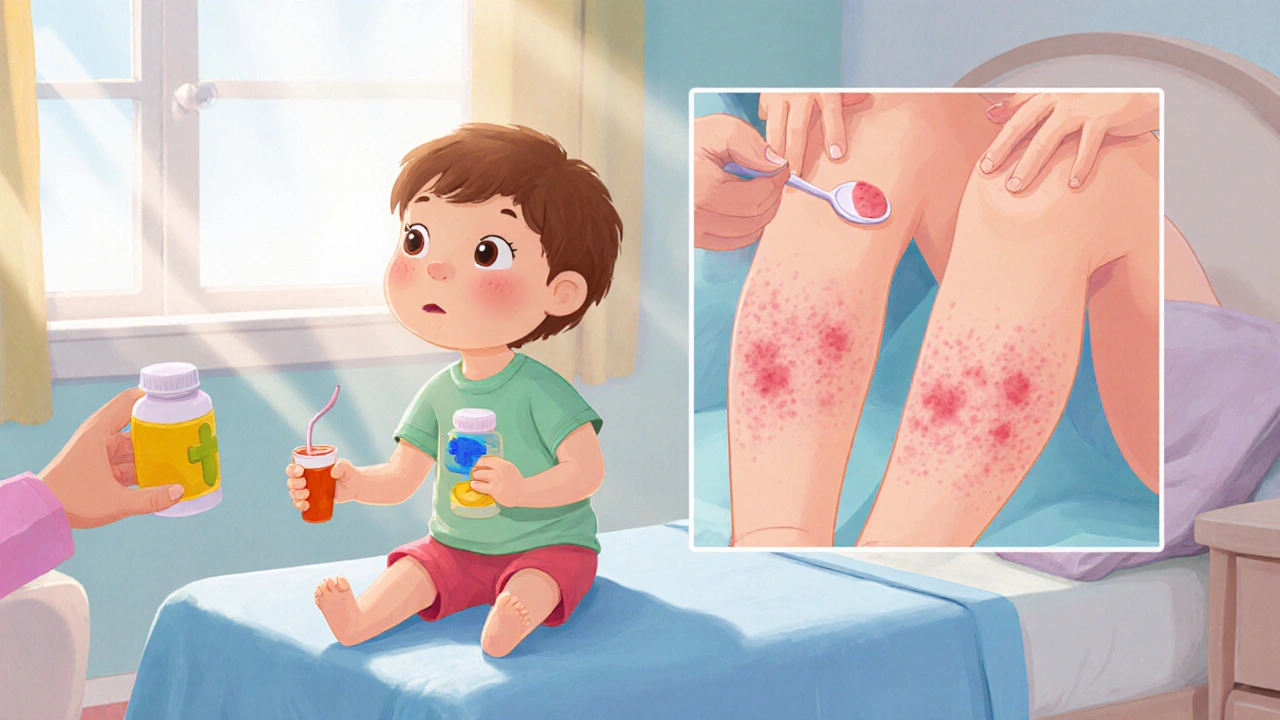Cefaclor Reaction – What You Need to Know
When dealing with Cefaclor reaction, the body’s response to the antibiotic cefaclor, which can range from mild nausea to serious allergic symptoms. Also known as cefaclor intolerance, it shows how the immune system interacts with this drug. Cefaclor reaction is not a random event; it encompasses multiple pathways such as allergic reaction, an immune‑mediated response that can cause hives, swelling, or anaphylaxis. It requires careful monitoring because the same mechanism can trigger broader antibiotic side effects, unwanted symptoms like diarrhea, rash or liver enzyme changes that accompany many antibiotics. Moreover, drug interactions, other medicines that alter cefaclor’s metabolism or increase its toxicity often amplify the reaction, making severity a moving target. Cefaclor, a second‑generation cephalosporin used for ear, skin and throat infections works by disrupting bacterial cell wall synthesis, but that same action can irritate the gut lining, leading to nausea or abdominal cramps. The key to staying safe is recognizing early signs: itching, wheezing, sudden fever, or a sharp stomach upset after the first dose. If any of these appear, stopping the medication and consulting a healthcare professional is the fastest way to avoid escalation.
How to Spot, Manage, and Prevent a Cefaclor Reaction
Understanding the triggers helps you prevent problems before they start. A classic allergic reaction to cefaclor often shows up within minutes to hours, while non‑allergic side effects like diarrhea may develop after a day or two of treatment. Because antibiotic side effects can be dose‑dependent, following the prescribing instructions exactly – no extra pills, no missed doses – reduces the odds of trouble. If you’re taking other drugs, check for known drug interactions. For example, combining cefaclor with certain diuretics or oral contraceptives can raise blood levels, increasing rash risk. A simple checklist works: review the medication label, ask the pharmacist about interactions, and keep a symptom diary during the course.
If a reaction does occur, the first step is to stop cefaclor immediately. Mild itching or a rash often responds to antihistamines, but severe swelling, trouble breathing, or a drop in blood pressure signals an emergency – call 911 or go to the nearest ER. For non‑allergic side effects, staying hydrated and eating bland foods can ease stomach upset; probiotics may help restore gut flora after a course of antibiotics. In some cases, doctors may switch you to a different class, such as a macrolide, to finish treatment without triggering the same response. Remember, a past cefaclor reaction doesn’t mean you’re allergic to all cephalosporins, but it does warrant a careful evaluation before trying another one.
By keeping an eye on symptoms, respecting dosage, and checking for interactions, you turn a potentially scary situation into a manageable part of your health routine. Below you’ll find detailed articles that dive deeper into each aspect – from the chemistry behind cefaclor’s action to real‑world stories of allergy management – so you can make informed choices the next time you or a loved one needs an antibiotic.

